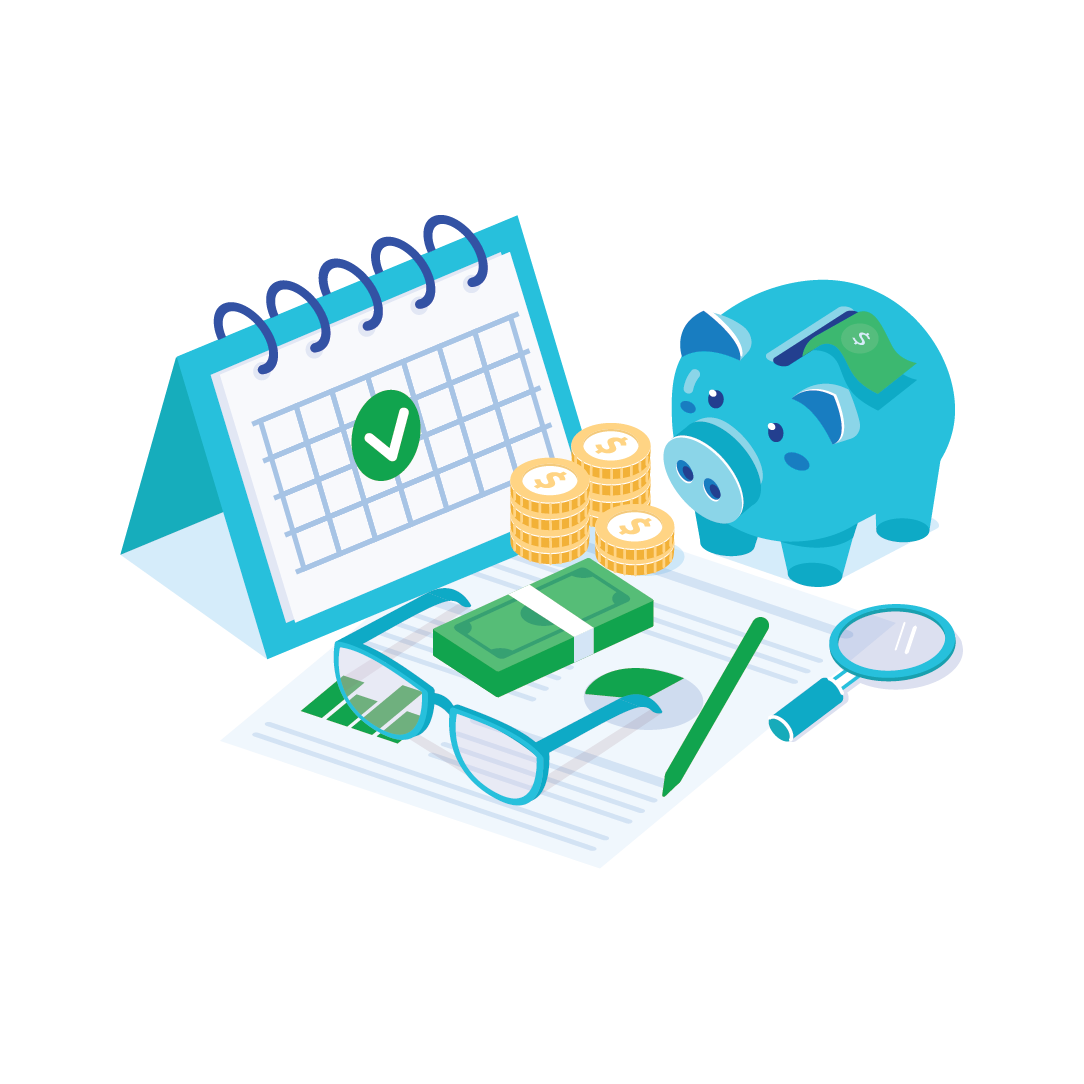Compare Personal Loan Rates From 15+ Lenders in 2 Minutes
Comparing rates is free and has no impact on your credit score.

Loan amounts from $600 to $200,000

Rates from 5.40% - 35.99% APR1
Featured In








9+ Years History
finding low rates for borrowers

300,000+ Customers
have checked rates

$2+ Billion
in funded loans

Why Personal Loans?
Personal loans are a popular type of installment loan where you borrow money and pay it back on a monthly basis over an agreed-upon time period — typically two to five years, or even longer. Whether you need funds to pay off costly credit card bills, cover wedding expenses, make home improvements, or get ready for a new family member, a personal loan could be an attractive alternative to other forms of credit. Personal loans are also quick — they typically fund (meaning money is sent electronically to your bank account) anywhere from the same day to within a few business days.
Expenses Come at You Hard — Find the Best Personal Loans for Every Situation
Personal loans can be used for many purposes. Here are some common examples:
Debt Consolidation
Debt Consolidation
If you have high-interest credit card debt, a personal loan could save you significantly on interest costs and get you on the fast track to financial wellness.
Home Improvement
Home Improvement
Whether you have a small weekend project or you’re planning a big upgrade, a personal loan could cover your expenses.
Wedding Expenses
Wedding Expenses
Weddings are more expensive than ever — a personal loan could help make your dream wedding a reality.
Vacation
Vacation
Instead of putting your dream vacation on a high-interest credit card, let a personal loan take you where you want to go.
Moving Expenses
Moving Expenses
Whether you’re moving for a new job or just bought your dream home, a personal loan could take the stress out of funding your journey.
Family Planning
Family Planning
If you’re expecting a little one, getting ready to adopt, or getting started with IVF, a personal loan could help get your family started on the right track.

And More
Personal loans can be used for a variety of other expenses, including professional development, business expenses, unplanned events, emergencies, and more.
How To Find Personal Loan Lenders That Work for You
Find the best lender and apply in minutes — it’s quick, easy, and 100% online.
1. Get Pre-Qualified
Fill out your information and compare
personal loan rates from top lenders.
2. Apply Online
Submit your application and any
required documentation for approval.
3. Receive Your Money
Sign your loan documents and funds will be sent to your account.
Personal Loan Calculator
See how much your personal loan will cost in seconds. Enter your loan amount, interest rate, and repayment term to view your estimated monthly payment and total interest.
Results
$127
Monthly Payment
$3,210
Lifetime Interest
Want to find a low interest personal loan? Use our rate comparison tool to check multiple lenders in 2 minutes with no impact on credit.
Pros of Personal Loans
Receive funds quickly, sometimes within one business day
Personal loan interest rates are often lower than credit card APRs
You can use a personal loan for almost any purpose
Flexible repayment terms and fixed rates allow you to plan a payment that fits within your budget
No collateral required to receive funds
Cons of Personal Loans
Personal Loans - FAQs
A personal loan is an installment loan that lets you borrow money from a bank, credit union, or other financial institution that you pay back on a monthly basis over a period of time known as the repayment term. The interest rate on your personal loan will be based on your credit score and other factors.
Repayment terms – how long you have to pay back the loan – vary by lender, but many lenders offer terms ranging from two to six years. If you take out a personal loan, funds are generally sent to you very quickly — as soon as the same day, or a couple business days.
| Credit Score | Average Interest Rate |
|---|---|
| 720-850 | 10.73%-12.50% |
| 690-719 | 13.50%-15.50% |
| 630–689 | 17.80%–19.90% |
| 300–629 | 28.50%–32.00% |
The most common type of personal loan is an unsecured personal loan, which doesn’t require you to put up any collateral.
Some personal loans are secured, and they require you to put up collateral. Collateral is something of value, such as cash savings, an automobile, or even a house, which is used to guarantee the loan. If you are unable to make payments in the future, ownership of the collateral may pass from you to the lender.
Getting a personal loan is a quick and easy process compared to other types of loans like mortgages. Most lenders allow you to check your rate and prequalify without any impact on your credit score — you can also check multiple lenders at once with Purefy’s tool.
Once you’ve prequalified, you can submit an application, which generally takes less than 15 minutes. The lender will run a hard credit check and you may be required to submit some documentation such as a paystub. If your loan is approved, the lender will typically wire the funds directly to your bank account.
All in all, the process can be completed in anywhere from the same day to a few business days, depending on the lender.
A fixed rate loan has in interest rate that will not change over time, meaning your monthly payment will be the same throughout your repayment term.
A variable rate loan, on the other hand, has an interest rate that will fluctuate with market rates. They are usually tied to the Secured Overnight Financing Rate or “SOFR” index. If market rates go down, your rate and payment will go down, but if market rates go up, so will your rate and payment.
Variable rates tend to be a little bit lower than fixed rates, at least to start. They can be a good option to consider if you plan on paying off your loan quickly and you don’t expect market rates to rise that much. They can also be attractive when market rates are at historic highs and you expect rates to decline.
For starters, you should always check multiple lenders to make sure you get the best deal on a loan. Purefy makes this easy with our rate comparison tool.
When comparing personal loan options, the key items to consider are:
- Which lender is offering me the lowest interest rate on the repayment term I want?
- Can I afford the monthly payment?
- Does the lender charge any fees, such as origination fees, late payment fees, or prepayment penalties?
- How long until the loan will fund?
Yes, you can use a personal loan for debt consolidation — in fact, consolidating credit card debt is one of the most common reasons people take out personal loans.
If you have higher-interest credit card debt, paying off that debt with a low interest rate personal loan can save you a significant amount of interest and help you get out of debt much faster.
Credit cards also usually have variable interest rates, which means that your interest payments could go up if market rates go up. Personal loans typically offer fixed rates.
In general, yes — with most lenders, you can use a personal loan for almost any purpose. Some lenders may have restrictions. Personal loans shouldn’t be used to pay for your education – student loans are the appropriate choice there, and usually come with lower interest rates as well.
When you apply for a personal loan, you are usually asked what the purpose of the loan is – e.g. debt consolidation, home improvement, or simply “other.” In some cases, lenders offer different interest rates for different loan purposes.
Yes, you may be able to get a personal loan if you have bad credit, but your options will be limited and it could be more difficult to qualify. Bad credit is generally defined as a credit score in the low 600s or worse.
Check our rate comparison tool to see if you prequalify with our lender network – you might be surprised.
While you don’t necessarily need good credit to obtain a personal loan, having good or excellent credit may result in lower interest rates and more lenders to choose from.
Our comparison tool includes options for an array of credit profiles, and checking rates won’t hurt your credit.
The requirements to qualify for a personal loan vary from lender to lender, but most lenders will look for things like:
- A fair or good credit score – although some lenders have loan options for people with poor credit
- Steady income and employment
- Borrower is 18 years or older
- Borrower is a U.S. Citizen or Permanent Resident with a Social Security Number
The amount you can borrow varies from lender to lender, but many lenders offer loans as high as $50,000 and some even as high as $100,000.
However, even if a lender advertises a high maximum loan amount, to qualify for the largest loan sizes you may need to meet specific credit requirements and debt-to-income requirements.
Purefy’s rate comparison tools, educational webpages, and blogs are always free to use and we will never charge fees.
Some lenders may charge fees such as origination fees or late fees – consider these in addition to factors like interest rate when deciding to take out a loan.
Checking rates on Purefy has no impact on your credit. Purefy’s tool uses credit “soft pulls” to see if you qualify and find prequalified rates. A soft pull has no impact on your credit and will not affect your credit score.
If you decide to submit a full application with a lender, you will need to consent to a hard credit pull, which may result in a temporary reduction of your credit score.
The lowest rates advertised by lenders are usually only available to borrowers with excellent credit who meet the lender’s other requirements. In general, the higher your credit score, the better chance you have at getting a lower rate. Factors such as income, debt-to-income ratio, and other criteria can also affect your rate.
The beauty of Purefy’s comparison tool is that we’ve taken the guesswork out of finding the best deal – simply enter your information to search a network of lenders and see which company will offer you the best rate.
When you compare rates on Purefy, you will see the monthly payment estimate for each of your loan options. If you would like to estimate payments on your own, you can also use our Personal Loan Calculator.
The easiest way to find a low-interest personal loan and see if you qualify is to use a comparison tool such as the one offered by Purefy. Searching for offers from multiple lenders is the number one way to help yourself get the best deal.
Funding time varies by lender. Some lenders can fund loans on the same day, while others may take a few business days. Generally, online lenders take 1-5 days, banks 1-7 days, and credit unions 1-7 days. Money is usually sent electronically to your bank account, ensuring quick delivery.

